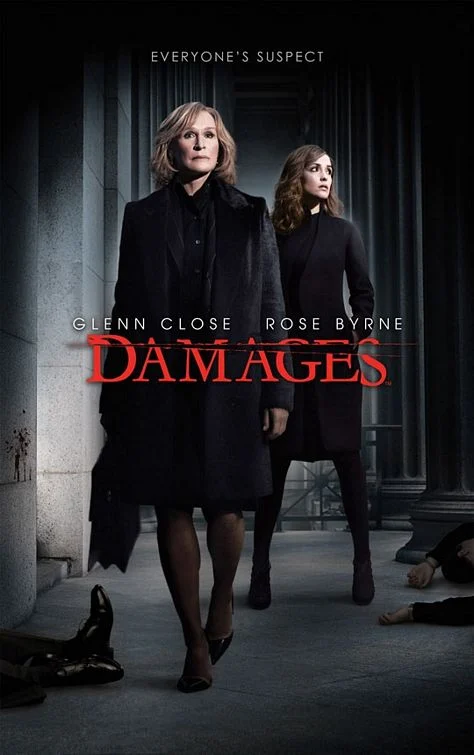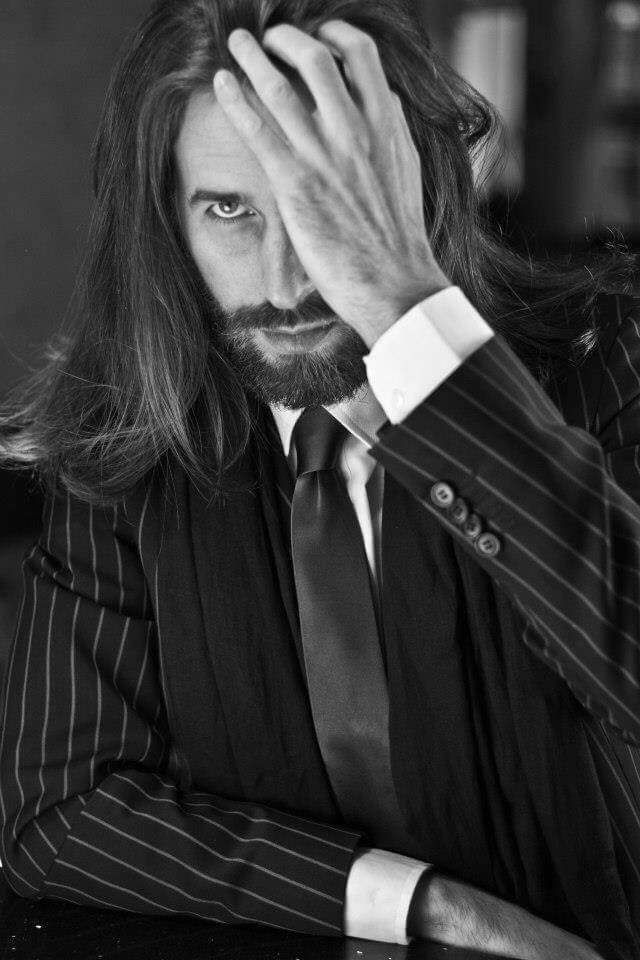DOMENICO VACCA, rare class and mastery of beauty but well done
- Elisa Nori

- Mar 11, 2023
- 17 min read
When we think of Made in Italy, it is impossible not to associate it above all with the 80s, the years in which Milan assumed a fundamental role on the international scene, transforming itself into a real point of reference, catalysing styles and trends. Thanks also to a flourishing textile industry and clever marketing strategies, the economic crisis is overcome and groups of rich Americans arrive from the USA to redo their wardrobe; luxury reigns again.
Thanks to Beppe Modenese, manager and honorary president of the National Chamber of Italian Fashion who in 1979 organized the first fashion show with the participation of over forty stylists in the area of the Milan Fair, the city became the capital of fashion, supplanting Florence, Rome and Paris.
Alan Friedman witnessed the turmoil firsthand, working between 1983 and 1989 as a foreign correspondent for the Financial Times.
Stylists such as Gianni Versace, Gianfranco Ferrè, Ottavio Missoni, Giorgio Armani, Franco Moschino, Dolce & Gabbana, Miuccia Prada, Krizia bring Italian fashion to memorable international levels...a true revolution/renaissance of taste.
Ambition and success are the keywords that outline the ideal of feminine and masculine beauty; the model of the female manager dressed appropriately both in the private and in the public sector takes over, but the power-look is also omnipresent for men.
Double-breasted suits with padded shoulders that convey strength, grandeur and charisma, as in the Miami Vice series, become a real must for men, but emancipation is also emphasized for women by suits with very tight;
padded shoulders, short, fitted skirt with elegant blouse alternate with pantsuits.
Former actor Ronald Reagan and his wife Nancy help to add a touch of glamor to the White House, but Ivana Trump and Donald Trump also perfectly embody the ideal of the decade.
Television series such as Dynasty or Dallas remain incredible study subjects for the American way of life and 80s fashion.
The film "American Gigolò" instead consecrates Armani, who designs a collection of jackets for a seductive Richard Gere; this greatly influences sales, confirming the power of the screen to dictate fashions and trends.
Briefly retraced some characteristics and their respective personalities in sight, of one of the most flourishing and decisive periods of Made in Italy, if we want to speak of elegance, distinction and good taste ... certainly a current supporter and protector is Domenico Vacca, a stylist born in a family of tailors and fashion creators.


Passion and competence are two extremely important qualities when it comes to fashion and Vacca has not only ensured that Italy continues to shine and excel, through his creations, but has also managed to ensure a remarkable continuity of success by leading us to where we Italians are always been acclaimed for our artistic talents.
The artisan sensibility and the deep knowledge of fabrics, for quality to be the first unmistakable point of a brand, is not something for everyone but Vacca has considerably confirmed it by bringing Italian haute couture both among Hollywood stars and among men most powerful in the world; for this he was defined by the New York Times, "King of luxury" and by La Repubblica "The Ferrari of clothing".
Another positive note is the praise that he never fails to pay for the Neapolitan sartorial production, of which he remembers mastery and mastery superior to many others, with 100 master tailors and 250 seamstresses to sew and build his collection by hand; Neapolitan elegance has ancient origins and boasts a history of great weight that we could even trace back to the year 1351, the year in which the Confraternita dei Sartori was founded.

Naples is also among the cities that have made the history of Italian fashion. In the Campania region, there are many leather and fabric industries that supply the most important fashion houses, including Dolce & Gabbana, Dior, Prada, Gucci and Chanel.
It is unthinkable not to mention the Men's Fashion Festival which later became the International Sartorial Art Festival; through it master tailors have contributed to the diffusion of Made in Italy in the world and many of them are Neapolitan, just think of the Attolini, Ciardi or Marinella tailors.
It is exciting how a stylist aims to make Italy remember its primacy in knowing how to dress all over the world, a primacy that perhaps needs to be dusted off in our own country given that the generational change has changed style and habits, not always intelligently and perhaps because by now it is taken too much for granted; the historical context of recent years has also not played in our favor.
It is therefore necessary to re-educate the Italians to reappropriate what has always been theirs by right and by tradition.
Purchasing in a targeted way, preferring precious and quality fabrics is the aim of the Vacca brand, without abandoning yourself to a comfortable but so informal fashion that it becomes unkempt or, on the contrary, excessively twisted and coarse.
Clothes and accessories must tell a lasting story and give recognition to the wearer; the beautiful and well done goes together with the simple but of substance.
The Italian potential has always been unlimited, minus the management and the opportunities offered in our territory.
Vacca has once again bet on his homeland by bringing back the true made in Italy, made known abroad to those who longed to dress like us, within the reach of their legitimate heirs; first choosing Rome as the location for a series of future boutiques, the eternal city and capital of Italian cinema, but also reconnecting with the colors and beauty of Puglia...demonstrates both mental acuity but also a deep bond with one's roots.
The recognition towards a land that in addition to emotional ties has taught him that ability, elegance and attention to detail are fundamental is tangible; in order to be appreciated all over the world, one must always make a difference and I believe that thanks to him fashion in Italy will once again be unforgettable.

Domenico Vacca is an Italian stylist, creative director, costume designer and entrepreneur.
Born in Andria, Italy, the son of Nicoletta Di Bari and Michele Vacca, he spent his early years in his hometown.
The family has been deeply rooted in fashion since the 1920s, as their grandmother Sabina Orciuolo was a successful stylist and seamstress.
She owned an atelier with her relatives all master tailors and thirty seamstresses, who created beautiful handmade dresses and jackets.
Vacca grew up in this tailoring wonderland playing with fabrics from an early age and helping his relatives to make their creations.
He then graduated with honors in Law from the University of Bari and moved to Milan where he worked at the Milan office of the prestigious American law firm Baker & Mckenzie; in 1989 he won a Baker & Mckenzie scholarship to study abroad.
In the summer of 1990 he studied comparative law at Georgetown University in Washington D.C. and in 1991 he graduated from New York University.
The same year, he joined the Baker & Mckenzie office in New York City, where he represents and advises many Italian companies and fashion brands including Tod's, Versace, Hugo Boss, Ermenegildo Zegna, Malo, Byblos, Gentry Portofino, l 'Agency for Foreign Trade, the Italian TV Networking RAI, in doing and expanding its business in the United States.
In 1995, after her father's death from cancer, she decided to leave her successful career at Baker & Mckenzie and follow his passions: publishing and fashion.
He founded a publishing house in New York and launched Italia Magazine, the first glossy magazine dedicated to Italian culture and its best products and brands.
The magazine reaches a circulation of 200,000 copies and is available on national newsstands and in all luxury Italian boutiques and restaurants in New York, Miami and Los Angeles.
In 1997 he founded an event that takes place in New York City where the best Italian companies operating in the world are awarded: "The Made In Italy Awards".
In 2001 he sold the magazine and in 2002, after five years of full immersion in the Neapolitan tailoring school, he launched a line of clothing for men, women, shoes, bags and accessories that bears his name: Domenico Vacca.
Between 2002 and 2006 he opened six stores in the United States: New York (Fifth Avenue, Madison Avenue and Soho) Beverly Hills, Bal Harbor and Palm Beach; to these is added the Doha store in Qatar.
Since 2005, he has become one of the favorite stylists of Hollywood costume designers and collaborates with them to dress leading actors and actresses in films such as Transformers 3 (John Malkovich), Nobody's Child (Al Pacino), Just Wright (Queen Latifah, Common, Paula Patton), The Inside Man (Denzel Washington, Jodie Foster, Christopher Plummer), Stranger Than Fiction (Dustin Hoffman, Will Ferrell, Queen Latifah), August Rush (Jonathan Rhys Meyers), The Kite Runner (Shaun Toub) and TV series such as Lipstick Jungle (Brooke Shields), the FX drama Damages (Glenn Close) and HBO's In Treatment (Gabriel Byrne).
It is Vacca himself who dresses Denzel Washington in American Gangster and his friend Forest Whitaker in the series Goodfather of Harlem and in the films The night can not wait and Marriage in the family.
Even Terrence Howard in the TV series Empire and Michael Douglas in the famous The Kominsky method, wear his clothes.
Vacca creates wardrobes in more than 50 films and TV series, for characters played by, among others, Matthew McConaughey, Marisa Tomei, Matt Dillon, Angela Bassett and Alan Alda.
To testify to the predilection of big screen stars for creativity, it is enough to remember that Daniel Day Lewis, Forest Whitaker, Alan Arkin and Melissa Etheridge, at the time of collecting their Oscars, wore creations by Vacca, also chosen by Jeremy Piven for the Golden Globe and Emmy Awards.
Among his most loyal customers there are also some of the biggest music stars such as Kanye West, Usher, 50 Cent, L.A. Reid, Sean P. Diddy Combs and Yoko Ono; but also actors of the caliber of Ashton Kutcher, Denzel Washington, Christopher Plummer, Dustin Hoffman, Jodie Foster, John Malkovich, Jonathan Rhys Meyers, Keri Russell, Melanie Griffith, Nicolette Sheridan, Queen Latifah, Renée Zellweger, Alan Alda, Vincent Gallo, Jack Black, Michael Imperioli, Glenn Close, Jeremy Piven, Will Ferrell, Steve Carell, Antonio Banderas and Scarlett Johansson.
Among the athletes, Lebron James, Scottie Pippen and Steve Smith wear his clothes; The Fortune 500 in New York City. There is no shortage of VIPs such as Ronald Perelman, Ronald Lauder, Gustavo Cisneros, Edgar Bronfman Jr, Pepe Fanjul, Giuseppe Cipriani, Ivana Trump and Anne Bass and even fashion stars, such as Valentino and Tommy Hilfiger.
Among the numerous firsts and awards, he obtained the Margutta prize for fashion, the Four Seasons Italian Excellence prize, the Apulia Best Company Award, Man of the Year, Boy's and Girl's Association of America, the Pugliesi nel Mondo prize, Italy on Screen Award for Italian Excellence in the United States, Recognition of Italian Excellence in the World by the Italy-Azebaijan Interparliamentary Association of the Senate of the Italian Republic and Best of the Best Award as the best Italian fashion collection by the prestigious American magazine Robb Report for two consecutive years.
Recently returned to his roots, in December 2021 he opens a store in Piazza di Spagna in Rome where he often organizes cultural events aimed at promoting Italian culture by hosting conferences, book presentations, vernissages of artists; Vacca's intention is to bring the brand, here in Italy and from Italy to expand throughout Europe, Eastern Europe and the United Arab Emirates.
In addition to taking his brand around the world, he buys two properties in Puglia: a building in Trani on the port and a farmhouse inside.
The first, a monument from the 1400s, will be renovated and become the first Domenico Vacca building; the second will be transformed into a 5-star hotel, with the same name.
The grace and good manners of a gentleman from the past emerge in Vacca's clothes and in his way of presenting himself to the world... this also made the difference in the approach with many famous people for whom he lent his work and consequently the success of each individual garment.
With finesse and refinement he allowed me to understand a world that is dear to me and at the same time I was able to reconfirm how fashion and cinema are eternally intertwined.
Having studied directing and screenwriting, I can say with certainty that the care of the clothes intended for a film set is of fundamental importance, because all the information necessary to frame him contextualizes and makes the character credible in his role, including precisely clothing and accessories.
For an artist like her, working with people who are involved in different art forms must be a reciprocal exchange of emotions and incomparable experiences. What did you feel or do you feel when you see her clothes on the big screen?
It is an immense satisfaction. Seeing your creations on the big screen and on TV is certainly a very rewarding experience. Working with actors, mostly Oscar winners, directors, costume designers and producers is a great experience where we come into contact with cinema and television excellence and, for us, help them to give an aesthetic sense to their project and help the actors to "enter" the character gives us the opportunity to expand our horizons and be part of a team, a project, to be proud of.
What do you think is the substantial difference between Italian and American cinema at present? The Americans have taken a lot of our cinema and our music... Can we therefore consider ourselves brilliant artists, but with fewer means available to express this potential?
Certainly with fewer means, and in most Italian films and television series it can be seen from the result. The Italian cinema and television market is much smaller than the American one, 60 million people against 360 million people in America. This difference in the market dictates box office sales and television viewing, giving those working in this sector limited budgets even for the creation of costumes. In Italy you adapt, in America you have the opportunity to create costumes for actors with large budgets.
I agree with you when you say that in Italy people are envious of the success of others, while in America, perhaps out of constructive ambition, there is cooperation so that the benefit is to the advantage of the system and the community. Do you think that this provincial mentality penalizes Italy by preventing it from shining and broadening its horizons?
Absolutely yes. Italians don't make a team. They are very individualistic, they want to achieve success and flaunt it towards those who achieve less. In America there is more a team, if one person is successful everyone looks up to him and tries to be part of that team. In America, if a person has an idea, in most cases the others encourage him, they want to be part of the team that will develop that idea, they are more optimistic. In Italy, if someone has an idea, he immediately finds many people who discourage him, who tell him that he will never make it or... whoever makes you do it, you will find many obstacles and you shouldn't pursue it.
The figure of the craftsman is essential when it comes to quality ... I am a convinced supporter that the story behind a dress must absolutely be told, so that the rampant superficiality is defeated through preparation, technique and method.
You are in direct contact with the best craftsmen in the sector... tell us more.
Since we entered the Italian market we have realized that quality in Italy is no longer part of the culture of our country. Many do not understand the difference between a suit made by hand in Italy and one made by machine in an industrial way in some foreign country. We are fast becoming the country where the most fast fashion is consumed in the world. For Italians it no longer makes a difference if a garment is well made, for most of them the only thing that matters is the low price, they don't realize the hours of work it takes to make a quality suit , the experience of the tailors who still sew everything by hand, the quality of the fabrics. It is as if the word quality has disappeared in Italy, it no longer exists in the Italian vocabulary, everyone is on the hunt for garments full of logos, possibly at a low price. Then today we think, and this is a fault of the young stylists, that the more "strange" a garment is, the more trendy it is, fashion has become a circus that puts up allegories rather than collections of quality and taste. Italy runs the risk of no longer being considered the country of fashion within a few years. In America they are greedy for quality, they want to know how a garment is made, where it is made, by whom, with which fabrics.
Among the great actors and actresses you have dressed, music or sports stars, which are the ones with whom you have a closest relationship and which are the films among the many that are part of your career that you are most fond of?
I can say that I have developed friendships with many of them, to name a few Daniel Day Lewis, Forest Whitaker, Mickey Rourke, Jeremy Piven, Glenn Close, Alan Arkin, Dustin Hoffman, directors like Marc Forster, Paul Huggis, writers like Nick Vallelonga . And I also dressed Al Pacino, Denzel Washington, Harrison Ford, Pierce Brosnan, Diane Keaton, Rene Zelwegger, Brooke Shield and many others.
Among the films and series to which I am most fond of where I contributed with my work certainly the first, American Gangster, where we created the costumes for Denzel Washington, then the television series Entourage for Jeremy Piven, Damages for Glenn Close, Empire for Terrence Howard and for the very recent series The Godfather of Harlem for Forest Whitaker.
The craft of the costume designer is extremely precious in Italy given that many productions of clothes, especially the historical ones, require extremely accurate and meticulous work...
We boast a complex history with ancient roots, do you think this also influences the work itself?
In historical clothes we are still unbeatable. The easier availability of tailors specializing in historical clothing certainly helps in the making of films and television series of that type.
We hope this tradition will continue and not be lost over time.
Various personalities from showbiz and cinema, including Italian ones, wear your brand, but would you particularly like to take care of the wardrobe of some celebrities, more than others?
I've never set myself this goal, we dress very good actors and usually they find us. I'd like to dress other actors but by now they're almost all "under contract" with big brands that pay them handsomely to wear their clothes... even if in most cases they're not to their liking, but now fashion is becoming more and more... finance and less creativity.
The first Oscar award for costumes was established only in 1948, even if the success of the dresses had already taken hold much earlier, favoring the limelight of many actors and actresses; the relationship of love, work and collaboration between fashion and cinema has always been deeply rooted. What are the films that you consider most beautiful and significant for the care of clothes and costumes in the past cinema?
If we exclude historical films and focus on our times, certainly films such as American Gigolo', Casino, 9 1/2 weeks, The Leopard, the Italian films of the 50s and 60s, La Dolce Vita, are undoubtedly among the most significant.
In his first shop on Fifth Avenue he dressed heads of state like Bill Clinton and many others, personalities like Ivana Trump with whom he was very close, he has clients like Valentino and Tommy Hilfiger, as well as the great Yoko Ono; very important names even if they come from different sectors.
This confirms his well-deserved fame and does not mean knowing how to play a single note ... this is a real opera!
Do you have any anecdotes about these famous names?
Many, it would take a book to tell them all. Yoko Hono, being in her living room in New York in front of John Lennon's white piano is being... in history.
Dustin Hoffman telling me about his meeting in Rome with Federico Fellini and Anita Ekberg it was another moment I will never forget, being on the red carpet of the Cannes Film Festival in 2022 with Forest Whitaker, dressed Domenico Vacca, opening the festival and was receiving the Golden Palm for his career and that he wanted me to be with him on this very important occasion; it was certainly a significant moment in my career as well. And then being on the set of more than 50 films and television series for which we have created the costumes and seeing these great actors at work is now part of my life and of our brand.

You are a very courageous man as well as undoubtedly prepared, because you have always invested and carried out your projects even in the toughest moments and with uncertain prospects. Do you think the winning key is to find the way beyond the context? What would you recommend to anyone who wants to take the same path as you?
Don't be afraid, the universe is our partner and it always satisfies us, sooner or later, you need to know clearly what you want and as the Americans say ….go for it!


Italy and America...two different markets with just as many different ways of proposing and selling.
Even the concept of marketing alone is seen with decidedly discordant eyes given that for the American it is a fundamental step towards the goal and is part of the corporate culture,
both to distinguish your brand in the eyes of the consumer and the buyer.
In Italy, on the other hand, many small and medium-sized enterprises think about how much they will have to sell to recover the marketing investment and not vice versa; they do not consider marketing investment primarily, as a key point for developing a new business and boosting sales.
The difference then, consequently, influences all sectors and the result obtained; if we talk about cinema, Italy has the defect of often and willingly using the same figures who monopolize the screen, without adequate turnover or at least constant integration as happens in America, where it is necessary to create new talent, invest in them and sponsor them, thus giving them the chance to emerge.
The team mentality is also felt in this; certainly the acting itself is faced by the Americans with a professional seriousness that is scarce in Italy.
While Americans are introduced to acting schools from a very young age and only afterwards do they begin to have roles, in Italy it is very easy that once you have acquired a minimum of notoriety, even in contexts completely unrelated to the big screen, you move on to the cinema as if it were a game .
However, this can be seen when we have to sum up where the most successful actors are concentrated.
Talent needs to be forged adequately and to do this it is necessary to make sufficient means available, but also to change one's mentality and habits.
We Italians certainly focus on more articulated dialogues, perhaps because we have always been linked to the word even before the scenic impact, our own language has ancient origins; coming from a school like neorealism, the Italian has a greater inclination for reflection, for the search for identification with everyday reality and for intimacy, but with much more static settings and with almost no special effects.
American cinema tends to insert contexts that are not strictly real within the films, allowing more to depart from everyday life to project themselves into a world made of action, fantasy, experimentation and characters who overcome their physical and mental limits, strong against anything that might get in their way; perhaps a significant mirror of society itself, we incurable passionate and dreamers who struggle to apply what we think, while on the contrary the American always somehow knows how to apply to make the dream concrete; we are nostalgic while they are incurable optimists.
Our country has been home to many illustrious figures and undisputed geniuses of all-round art, many of whom however have found and are finding success outside our peninsula or rather, that success that makes the difference.
In fashion, on the other hand, we have moved on to an excess of scenic impact, where the concept of quantity has supplanted that of quality, as Vacca has rightly underlined. There are many stylists who propose surreal and dreamlike creations, without however often taking into account the effective practicality of the garments, the contexts in which they can actually be used. If conceived as works of art or as show dresses for rare occasions, surely there are those who will use them, but fashion has a duty to arrive and satisfy everyone, but in doing so it seems instead to address only those who fall into certain categories .
Fashion must certainly be conceived as freedom and as an expression of one's ideas, but also know how to adapt to the real needs of the consumer.
Originality doesn't mean confusion, modernity doesn't mean lack of technique and mastery of inventiveness; a garment can be apparently simple according to current standards, but not be so in its realization ... the substantial difference between knowing tailoring and applying some stitching.
In doing so, we risk becoming the real version of a popular saying: "the shoemaker leaves with broken shoes."
If we think that a completely handmade men's suit requires at least sixty hours of work and 25,000 stitches, we can understand the complexity of quality; even more elaborate and cumbersome women's dresses require hundreds of hours.
The Americans, on the other hand, have already been absorbing our fashion for many years, because they are eager to learn, to know, to understand its value.
Vacca recalls how luxury is not a mere whim, but the result of method and passion
and he does so by providing his customers with a personalized ordering system, with the possibility of choosing from more than 2,000 fabrics and a specific selection of leathers.

The iconic Julie Bag, a bag that turned 20 last year, was designed by Vacca for his ex-wife Julie Vacca, American fashion icon and muse.
This bag with a round shape and puff design without metal accessories has been the protagonist for many years now in the fashion shows during New York Fashion Week, as well as in the Domenico Vacca boutiques; made in four different sizes, it is offered by the Vacca maison every season in twenty different colors and in four types of leather.
With the opening of the first store in Italy, a Julie Bag was designed with the colors of our peninsula and a collection in eco-sustainable materials is planned as well as a version dedicated to the designer's current wife, the actress, model and presenter Eleonora Pieroni .


Cinema but even more fashion in Italy must head towards a recovery that can be considered such, where I hope that people who think they are awake will wake up completely to restore the luster that belongs to our land, so full of talent but so poor in means, organization and methodology.
We need stylists like Vacca so that our traditions don't dissolve in the wind or worse, that they pass as always into the hands of more ingenious people...after all, if we don't realize our own potential, someone else will do it for us.
Vacca still allows us to dream through his clothes icons such as Gianni Agnelli, Marcello Mastroianni, Cary Grant, Paul Newman, Gary Cooper and as you can see we draw these names from the past ... a symptom that perhaps the best, especially now, is not always ahead to us.


CONTACTS:

Official site: https://www.domenicovacca.com/
Instagram:
Facebook:



































































Comments